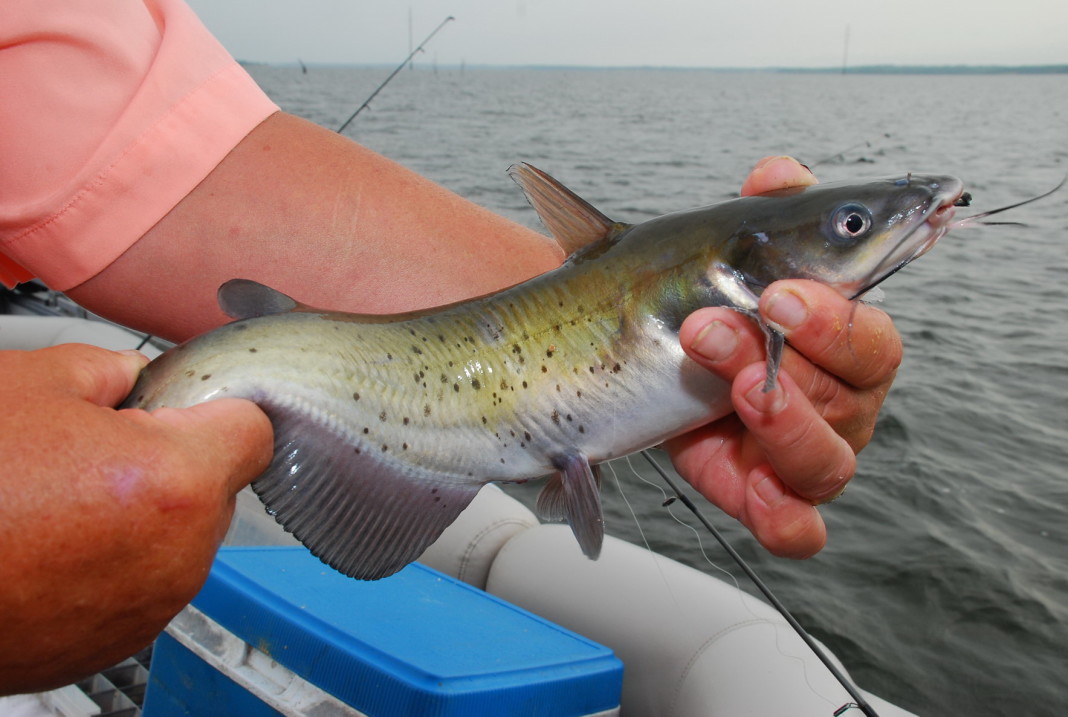The putrid stench mingled with the breeze as it slowly crept from its damp hiding spot in the plastic jar. As the devilish concoction steadily radiated an abominable wave of aroma in every nook and cranny, this angler slowly inhaled — through his mouth — and thanked his lucky stars breakfast had been a light one.
As with fine wine, this particular vintage had been taking a siesta until it was stirred from its slumber and given a new task. The vile mixture comprised of aged cheese and shad, with sour grain thrown in for texture, was destined to be doled out on treble hooks and sent into the murky depths under the weight of an egg sinker.
And what slimy silhouette below would dare dream of wolfing down this foul conglomeration, possibly risking life and fin in the process? Only the most gluttonous and recurring swimmer in our lakes and rivers today: Mr. Whiskers.
The catfish is among the most common fish not only in Texas but across the nation, and many anglers first get a taste of the pastime by chunking a variety of lures into anything from huge reservoirs to stock ponds in hopes of catching a glimpse of the face only a mother could love. Because of its wide-ranging appetite for anything — and I do mean anything — the catfish is a great angling target for young and old. Not only can they grow to extreme size in some cases, they are tough to beat as table fare and definitely will put some curl in a fishing rod.
The three common types of catfish in our state are the flathead, the blue and the channel. For the most part, the largest of that trio, the flathead — also known as a yellow cat or mudcat — eats live prey and is less likely to pounce on a prepared bait. However, an obliging blue cat or channel cat surely has never turned down anything from dog food, worms and chicken liver to dough balls, cut bait and hot dogs, only to find out their intended meal bit back.
Though they may not attain the overall girth of a giant flathead, a blue or channel cat still can pack on some weight, and it’s not uncommon for either type to reach double digits and continue growing from there in a big way.
In scorching summer months, catfish exhibit many of the same tendencies as other fish — they will remain submerged in deeper, cooler water during the middle of the day and move up in the morning and evening. By timing an excursion just right or upping the olfactory ante, you can increase your chances of catching a mess of fish — and quality ones, too. Spawning catfish especially like rocky areas or other spots that provide some type of cover, and locales such as riprap or those laden with pilings are common places to first prospect for summer angling.
Rather than go conventional, many anglers forego a rod and reel in favor of a trot line or jug line, which can be an effective way to catch a number of fish if they’re holding in a particular area. Some anglers also will bait an area with some type of sour grain or other attractant in hopes of enticing a slug of hungry fish into a section of water.
If you have access to a farm pond or other small body of water, you’ve likely got it good and don’t even know it when it comes to catfish. Though many people stock the hardy creatures in their petite bodies of water, the eggs laid by catfish often get stuck to water birds’ legs as they traverse the shallows in larger lakes. Those eggs then can end up in some other location rather quickly if the bird decides it needs a change of scenery — maybe even your fishing hole.
Because catfish are resilient creatures, the Texas Parks and Wildlife Department has chosen them as the main fish to stock in community fishing lakes and ponds across the state, and the agency conducts massive stocking efforts throughout the summer. These community lakes illustrate another good point about angling for catfish — you don’t need to haul around a boat and get hit with the double whammy gas bill from your truck and water toy in the same outing. Some of the largest catfish ever caught were hauled in by someone standing — or sitting — on the bank.
There’s no doubt you can hit lots of prime catfish habitat with some kind of boat, whether it be submerged logs, backwater coves or meandering dropoffs. But knowing you can take your kids — or someone else’s — for a laid-back day of fishing while having a high probability for success is a feather in your cap no matter what your angling prowess may be.
The catfish could be the perfect fish. No, they don’t sport the spectacular coloration of a redfish or fight as hard as a lunker largemouth or striper, but they can provide hours of fishing enjoyment with little prep time for you, me or thousands of youngsters who may or may not have the opportunity to spend time outdoors.
I’d say it’s a perfect week to take someone fishing — no matter who it is.
Just remember not to leave the stinkbait in your searing vehicle.


















